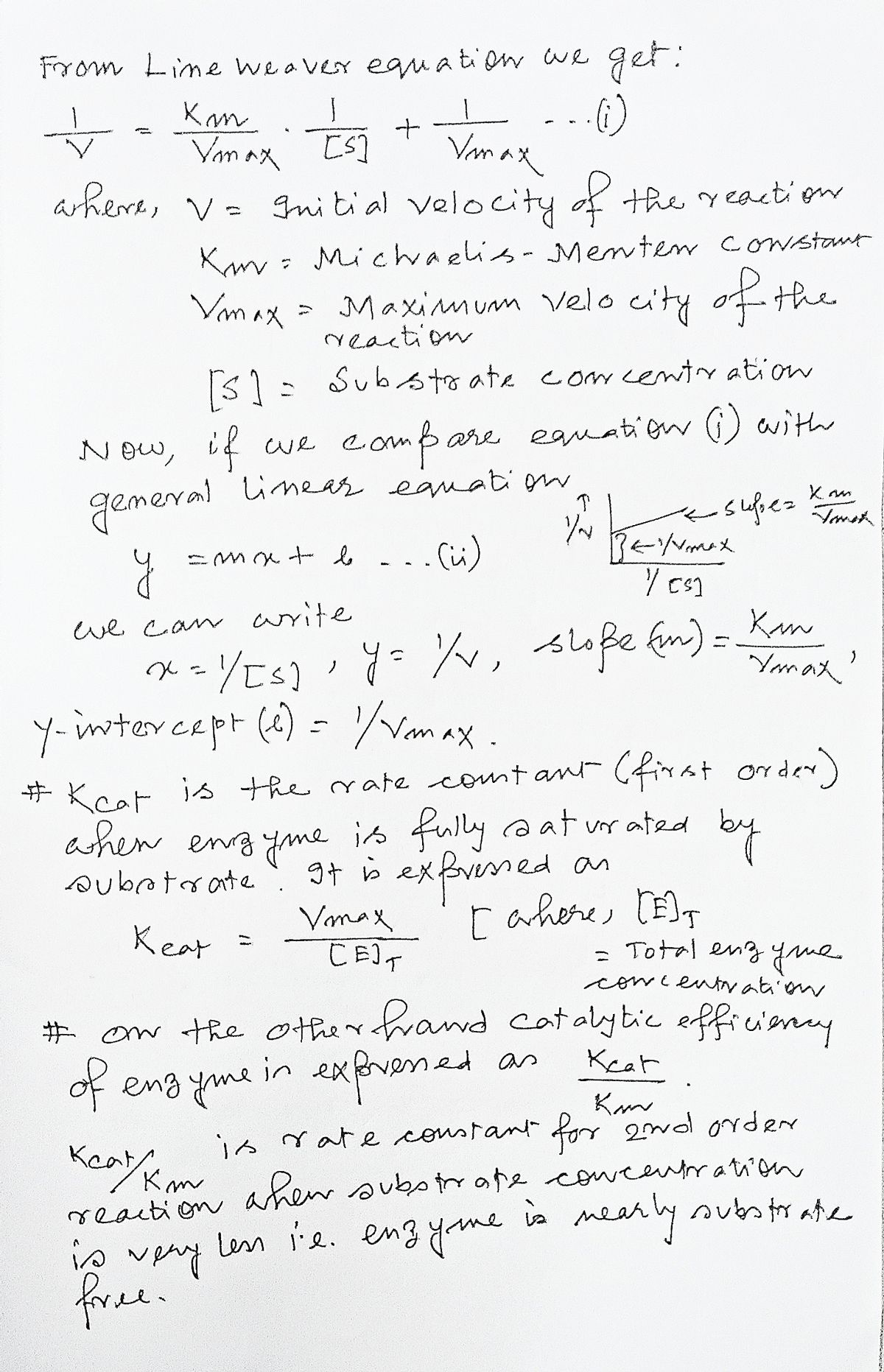7. A group of Colby students discovered a hydrolase that cleaves cellulose. After purifying the enzyme, an assay was performed by adding 0.1 µM of enzyme to the cellulose substrate concentrations shown below to characterize kinetic properties. [S] 2 x 10-6 M 4 x 10-6 1 x 10-5 2 x 10-5 4 x 10-5 1 x 10-4 2 x 10-³ 1 x 10-² 4 x 10-² V (umol/min) 28 40 75 95 112 128 139 140 141 A. Use the data in the table above to estimate KM and B. What is the keat of this enzyme? C. What is the catalytic efficiency of this enzyme? Max for the enzyme.
Catalysis and Enzymatic Reactions
Catalysis is the kind of chemical reaction in which the rate (speed) of a reaction is enhanced by the catalyst which is not consumed during the process of reaction and afterward it is removed when the catalyst is not used to make up the impurity in the product. The enzymatic reaction is the reaction that is catalyzed via enzymes.
Lock And Key Model
The lock-and-key model is used to describe the catalytic enzyme activity, based on the interaction between enzyme and substrate. This model considers the lock as an enzyme and the key as a substrate to explain this model. The concept of how a unique distinct key only can have the access to open a particular lock resembles how the specific substrate can only fit into the particular active site of the enzyme. This is significant in understanding the intermolecular interaction between proteins and plays a vital role in drug interaction.
![7. A group of Colby students discovered a hydrolase that cleaves cellulose. After
purifying the enzyme, an assay was performed by adding 0.1 μM of enzyme to the
cellulose substrate concentrations shown below to characterize kinetic properties.
[S]
2 x 10-6 M
4 x 10-6
1 x 10-5
2 x 10-5
4 x 10-5
1 x 10-4
2 x 10-3
1 x 10-²
4 x 10-²
V (umol/min)
28
40
75
95
112
128
139
140
141
A. Use the data in the table above to estimate KM and Vmax for the enzyme.
B. What is the keat of this enzyme?
C. What is the catalytic efficiency of this enzyme?](/v2/_next/image?url=https%3A%2F%2Fcontent.bartleby.com%2Fqna-images%2Fquestion%2F424482ac-ef50-4214-a1e3-aaaeb325792a%2F5680c574-ee2d-415c-abc5-b8ace75894f2%2Fih8ra5_processed.png&w=3840&q=75)

Step by step
Solved in 3 steps with 3 images









